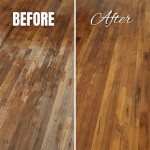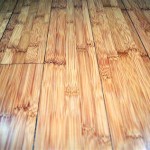Is Engineered Hardwood Flooring the Same as Laminate?
The world of flooring can be a confusing maze, especially when trying to decipher the differences between various types of wood-look options. Engineered hardwood flooring and laminate flooring often appear similar at first glance, both offering the aesthetic appeal of real wood. However, beneath the surface, they are distinct products with different structures, compositions, and characteristics.
Understanding these distinctions is crucial for making an informed decision about the best flooring option for your home. This article will delve into the key differences between engineered hardwood flooring and laminate flooring, highlighting their respective advantages and disadvantages.
Construction and Composition
The core difference between engineered hardwood and laminate flooring lies in their construction and composition. Engineered hardwood, as the name suggests, is a composite product that incorporates real wood. It consists of multiple layers of wood veneer, with the top layer being a genuine hardwood veneer that provides the visual appeal and durability. The layers below are typically plywood or other wood composites, providing stability and strength.
Laminate flooring, on the other hand, does not contain any real wood. It is a synthetic product made up of four primary layers:
- Wear Layer: This layer is made of a clear melamine resin or aluminum oxide, offering durability and protection against scratches, stains, and fading.
- Decorative Layer: This layer features a photographic image of real wood, providing the visual appeal.
- Core Layer: This layer is typically a high-density fiberboard (HDF) or particleboard, giving the laminate its stability and strength.
- Backing Layer: This layer is usually made of a moisture-resistant material, providing added protection against moisture damage.
Durability and Performance
Engineered hardwood generally offers superior durability and performance compared to laminate flooring. The real wood veneer used in engineered hardwood is more resistant to scratches, dents, and wear and tear. It can also withstand higher levels of foot traffic and heavier furniture. Moreover, engineered hardwood can be refinished multiple times, extending its lifespan considerably.
Laminate flooring, with its wear layer of melamine resin or aluminum oxide, is also durable and resistant to scratches. However, it lacks the natural resilience of real wood and cannot be refinished. Once the wear layer is damaged, the laminate flooring will need to be replaced entirely. This makes it less durable over the long run compared to engineered hardwood flooring.
Moisture Resistance
While engineered hardwood flooring is generally considered more moisture-resistant than traditional solid hardwood flooring, it is still susceptible to damage from prolonged exposure to moisture. It is not recommended for areas with high humidity or frequent water spills, such as bathrooms or kitchens. Laminate flooring, thanks to its moisture-resistant backing layer, is a better option for these areas. It can withstand occasional spills and splashes without warping or buckling.
Installation and Cost
Both engineered hardwood and laminate flooring can be installed using a floating method, meaning they are not glued or nailed directly to the subfloor. This simplifies the installation process and reduces the risk of damage to the subfloor. However, the specific installation techniques may vary depending on the manufacturer's recommendations.
In terms of cost, engineered hardwood flooring is generally more expensive than laminate flooring. This is due to the inclusion of real wood in its construction. However, the long-term durability and refinishability of engineered hardwood can offset the higher upfront cost. Laminate flooring offers a more budget-friendly option, especially for homeowners looking for a quick and affordable flooring solution.
Environmental Considerations
Engineered hardwood flooring is considered more environmentally friendly than laminate flooring. The use of real wood in its construction contributes to the sustainability of forests and reduces the environmental impact associated with the production of synthetic materials. However, it is crucial to choose engineered hardwood flooring that is certified by forest stewardship organizations to ensure responsible and sustainable forestry practices.
Laminate flooring, on the other hand, requires the use of various synthetic materials, including resins, plastics, and dyes. This can contribute to environmental pollution and resource depletion.
Conclusion
The decision between engineered hardwood flooring and laminate flooring is a complex one, requiring careful consideration of various factors, including budget, intended use, durability, and environmental impact. By understanding the key differences between these two types of flooring options, homebuyers can make an informed decision and choose the one that best suits their needs and preferences.

Engineered Wood Flooring Vs Laminate Albany Woodworks

Hardwood Vs Laminate Engineered Floors What S The Difference Clean My Space

Engineered Hardwood Vs Laminate Flooring

Laminate Flooring Vs Engineered Hardwood Lifecore

Laminate Vs Engineered Wood Flooring Comparison Luxury Blog

Solid Vs Engineered Laminate Wood Flooring Choose Wisely

Laminate Wood Flooring Vs Engineered

Engineered Wood Flooring Vs Laminate Pros Cons And More

Laminate Vs Engineered Wood Flooring Difference

Comparing Laminate Flooring To Engineered Wood Vs
See Also







